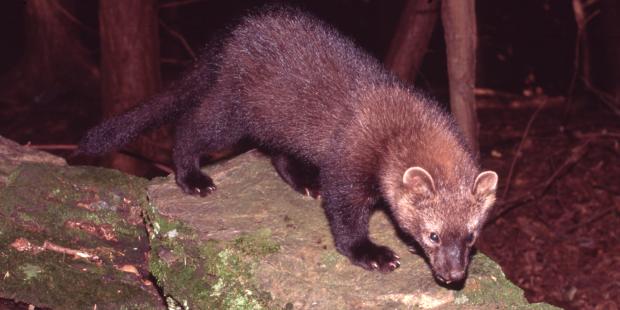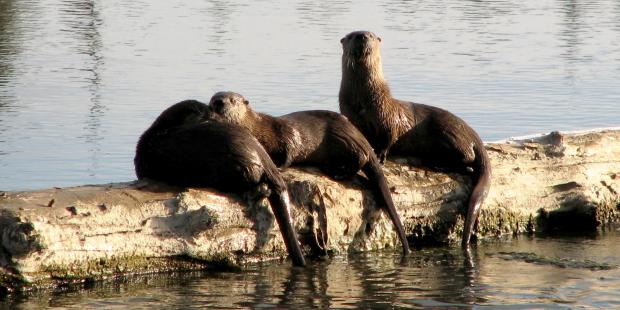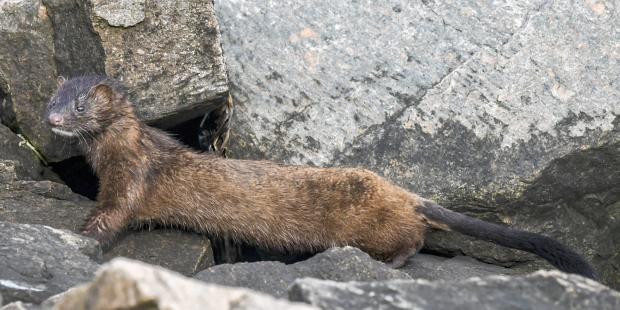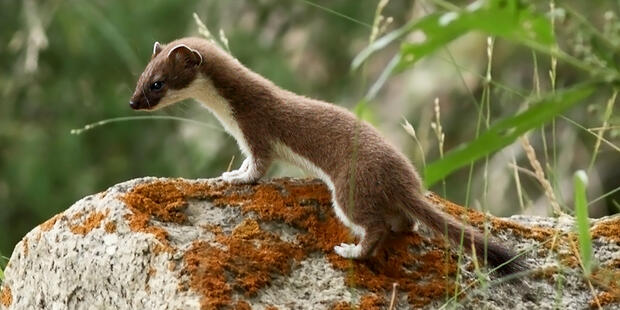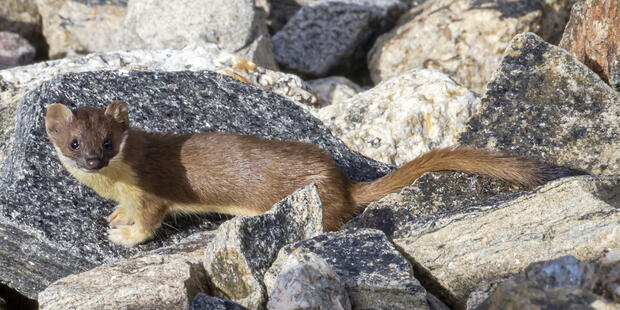- Division of Fisheries and Wildlife
Media Contact
Media Contact, MassWildlife
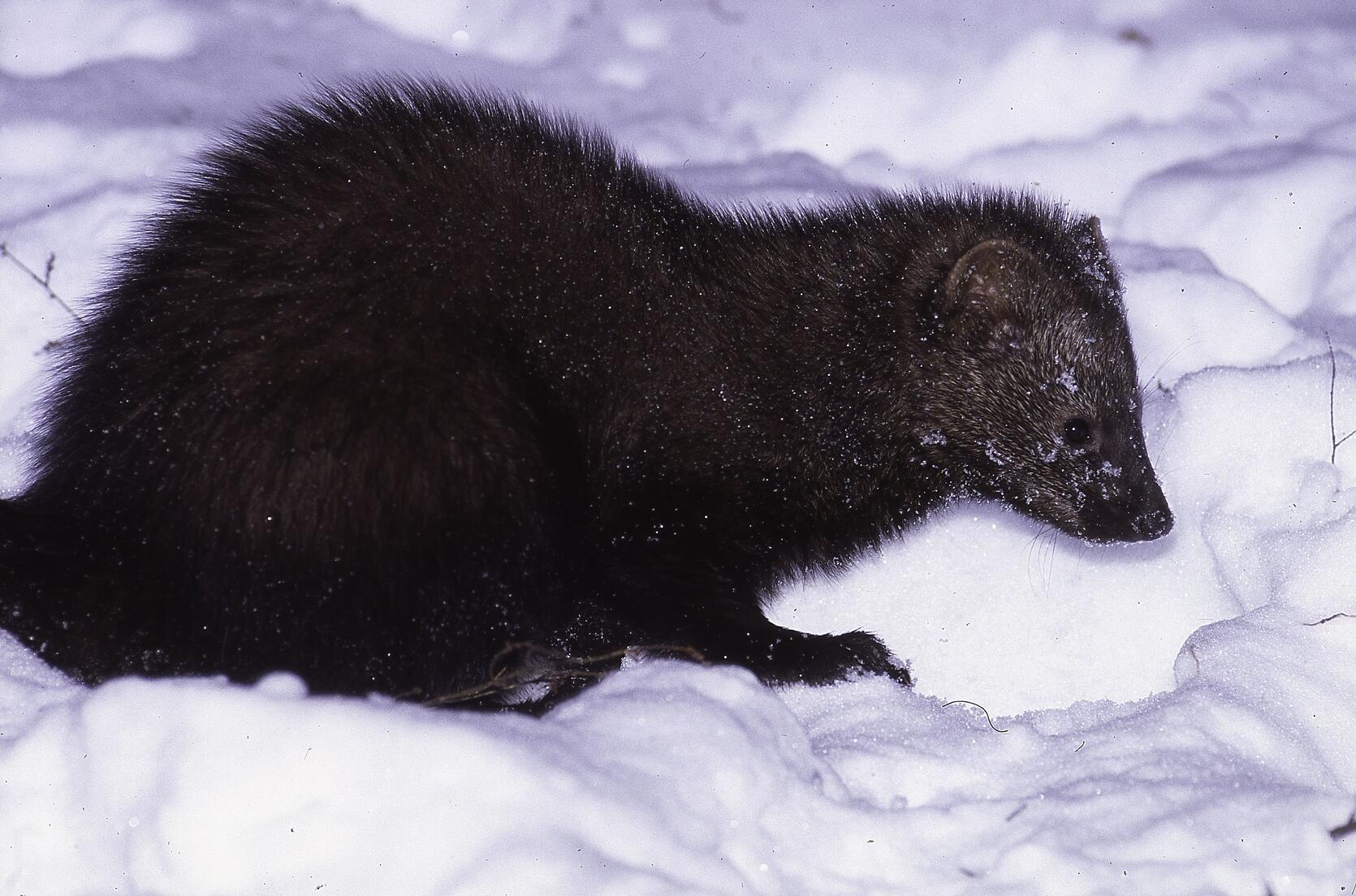
There are few families of wildlife that are as charismatic as the weasel family. Mustelidae, which includes weasels, minks, martens, badgers, wolverines, and otters, is the largest family in Carnivora with over 50 species spread across every continent except Antarctica and Australia. Mustelids can be found in a variety of habitats, including terrestrial and aquatic environments. One thing Mustelids have in common is their ability to mark their territory with a strong, musty smell. Some members of the weasel family, like otters, are famous for their playful personality and bounding gait.
There are currently 5 species of Mustelids in Massachusetts: fisher, North American river otter, American mink, ermine, and long-tailed weasel. Historically, Massachusetts also had American martens and wolverines but there hasn’t been an established population of either species since the 1800s. Given their similar silhouettes, it can be a challenge to identify which Mustelid you may have spotted. Read the descriptions below to discover the differences between the Massachusetts Mustelids. When you’re ready to test your new knowledge, try identifying the mystery animal in this video!
When identifying an animal, ask yourself:
- What is the approximate size of the animal? An animal can appear larger than it truly is if it’s close to the camera lens!
- How is the animal moving? Does it have a walking, lumbering, bounding, or trotting gait?
- What is the shape of the animal’s face, body, and/or tail?
- What type of habitat did you see the animal in?
Fisher
Appearance:
- Length: 2 – 3 ft., tail is about 1/3 of total body length
- Weight: 4 – 16 lbs.
- Rich brown to black fur with grizzled grayish coloring on the head and shoulders, can have white patches of fur on their chest and lower abdomen
- Long, slender body with short legs and furred tail
- Pointed face with large, rounded ears set close to the head
- Sharp, retractable claws that make them well-adapted for climbing trees
Habitat:
- Upland forests
Diet:
- Small rodents, squirrels, rabbits, birds, eggs, fruit, porcupines, and carrion
North American river otter
Appearance:
- Length: 3 – 4 ft., tail is about 1/3 of total body length
- Weight: 11 – 30 lbs.
- Dark brown water-repellent coat, a lighter colored belly, and silver-gray throat
- Long, slender body with short legs and webbed feet
- Thick tail that tapers to a point that make them efficient underwater hunters
Habitat:
- Marshes, lakes, rivers, swamps, and estuaries
Diet:
- Fish, crayfish, snakes, frogs, insects, crustaceans, amphibians, and mammals
American mink
Appearance:
- Length: 1.5 – 2.5 ft., tail is about 1/3 of total body length
- Weight: 2 – 3 lbs.
- Dark brown waterproof coat with a white spot on their chin, occasional white markings on the throat, chest, or belly
- Long, slender body with short legs and partially webbed toes
- Short, rounded ears and a pointed nose
- Moderately bushy, near-black tipped tail
Habitat:
- Lake shores, creeks and streams, swamps, salt and freshwater marshes, and coastlines
Diet:
- Fish, frogs, crustaceans, muskrats, and small mammals
Ermine (short-tailed weasel)
Appearance:
- Length: 6 in. – 1 ft., tail is about 1/3 of total body length
- Weight: 1.3 – 3.7 oz.
- Summer coat has brown fur with white underbelly and black tipped tail, winter coat has white fur with black tipped tail
- Long, slender body with short legs and small rounded ears
- Will move rapidly in a random pattern or burrow beneath the snow when hunting
Habitat:
- Deciduous forests, riparian woodlands, stream banks, forest edges, and rocky areas
Diet:
- Rodents, shrews, rabbits, red squirrels, and insects
Long-tailed weasel
Appearance:
- Length: 1 – 1.5 ft., tail is about 2/3 total body length
- Weight: 3 – 11 oz.
- Summer coat has brown fur with white underbelly and black tipped tail, winter coat has white fur with black tipped tail
- Long, slender body with short legs and small rounded ears
- Long-tailed weasels are more common than ermines in Massachusetts
Habitat:
- Woodlands, brushy areas next to fields, and grassy areas alongside wetlands
Diet:
- Rabbits, snowshoe hare, rodents, shrews, moles, and eggs
